Thursday, November 12th, 2015...6:07 pm
GradTalks Walking Tree Tour: Dinosaur Trees, and Camouflage!
Guest post: Swapna Mylabathula, Community Animator at Grad Room and MD/PhD student
It was a blustery but sunny day, and Fall’s vivid palette of colours were on display across campus. This was the peak of the leaves’ annual colour-changing show, and the perfect timing for a tree tour.
Despite an impending ‘severe wind advisory’, the weather seemed relatively friendly, so an enthusiastic group headed out from the Grad Room led by forestry expert John Barker. John is a graduate of U of T’s Faculty of Forestry and visits the Faculty as a guest expert to share his knowledge with current students. On this day, we were lucky enough to have him donate his time to act as a guide for the first GradTalks walking Tree Tour. Throughout the tour, which took us across campus and ended in Queen’s Park, John shared his vast knowledge about the interesting and unusual native and non-native trees that can be found on St. George campus.
We’re all familiar with coniferous trees – trees like pine and fir trees that don’t lose their needles even as the seasons change, unlike their deciduous comrades. But can you name a deciduous conifer that can be found on campus? That’s right – although unusual, some coniferous trees do lose their needles in the Fall. Stumped? The dawn redwood is one such deciduous conifer, and is native to China. The tour group made its first stop at a particular specimen planted beside the Athletic Centre, where John showed us its unique cones and red bark.
- The distinctive leaves of the deciduous conifer
- John talking about the dawn redwood
When you picture a Douglas fir, another conifer, do you imagine the forests of BC, or the Christmas tree you decorate each year? Us too! On campus, we actually have these, too – though John did note that these firs don’t tend to do as well in the urban areas. Perhaps not as easy to recognize are the Eastern Pines on campus, but John shared some useful tips for recognizing these beauties: they have bundles of 5 needles, and the cones are found at the top of the tree because they’re distributed by wind. With our severe wind advisory, many a cone must have been blown across campus to sow new trees that day!
- Eastern Pine visit
- Douglas Fir
- Douglas Fir’s distinctive bracts
If you’ve ever walked by Sidney Smith, you’ve probably seen what look like chestnuts underfoot. With Winter approaching, I can’t help but think that collecting a few and roasting would be a yummy idea! Sadly, on our stop at the horse chestnut trees in Wilcocks Common, John informed us that these chestnuts are not, in fact, edible. So if you’re looking to harvest the bountiful chestnuts from these trees for your table, beware you’re barking up the wrong tree! There are, however, edible tree nuts to be found elsewhere on campus. There’s the black walnut, which is an edible tree nut, and could definitely be used as that snack in front of a warm fireplace.
- The inedible chestnuts strewn across campus
On St. George St., we came across another interesting tree – the London plane, a natural hybrid. This tree is distinctive in more ways than one: its bark is patterned to resemble camouflage, and the bark peels quite easily. Because of these things, you may be more likely to notice the bare branches than the camouflage bark. Along the same street, in fact along many streets in Toronto, we can find the Norway maple. This tree is commonly planted for its dense canopy, and can be distinguished from the sugar maple by a couple of key differences – its broader, boxier leaves and the shape of its keys.
Outside Hart House, we got to see a tree that has been around since the time of the dinosaurs – the gingko tree! This tree may have been a favourite snack of some of the vegetarian dinosaurs back in the ‘land before time’. Today, it is a favoured tree to plant in many urban neighbourhoods. It survived such a long time partly due to a helping hand from Buddhist monks who planted ginkgos around monasteries and cared for them over many years.
The final stop on our tour was in Queen’s Park; there, we admired a magnificent white oak that John estimated to be 100 years old! We also stopped by a red ash with green paint on its trunk; this spot indicates that is has been treated as part of efforts to control the threat of the emerald ash borer. Here, John spoke about the importance of this program, and how changes in the ecosystem such as the introduction of a pest like the emerald ash borer can change the composition of our forests and the trees we see around us.
At the end of the tour, the group dispersed inspired to learn more about the trees on campus and beyond. The tree tour was a great opportunity to step away from our desks for a while, get some fresh air and exercise, and gain a deeper appreciation for the environment that makes the campus a beautiful place to work and relax. As climate change becomes more and more of a hot button topic in mainstream media, talks like these – and getting back to nature – are important to making sure that we have the knowledge we need to keep our trees, and Earth, happy and healthy. This experience was, literally, a breath of fresh air.

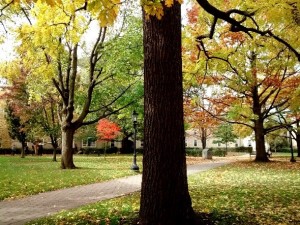
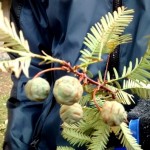
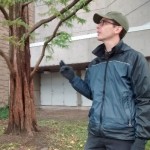
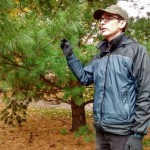

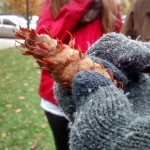
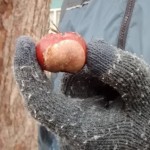

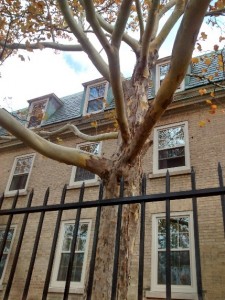
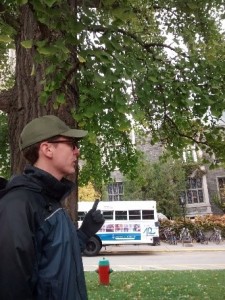
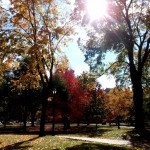
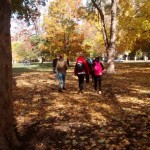
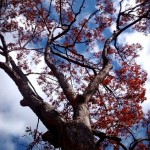
Leave a Reply